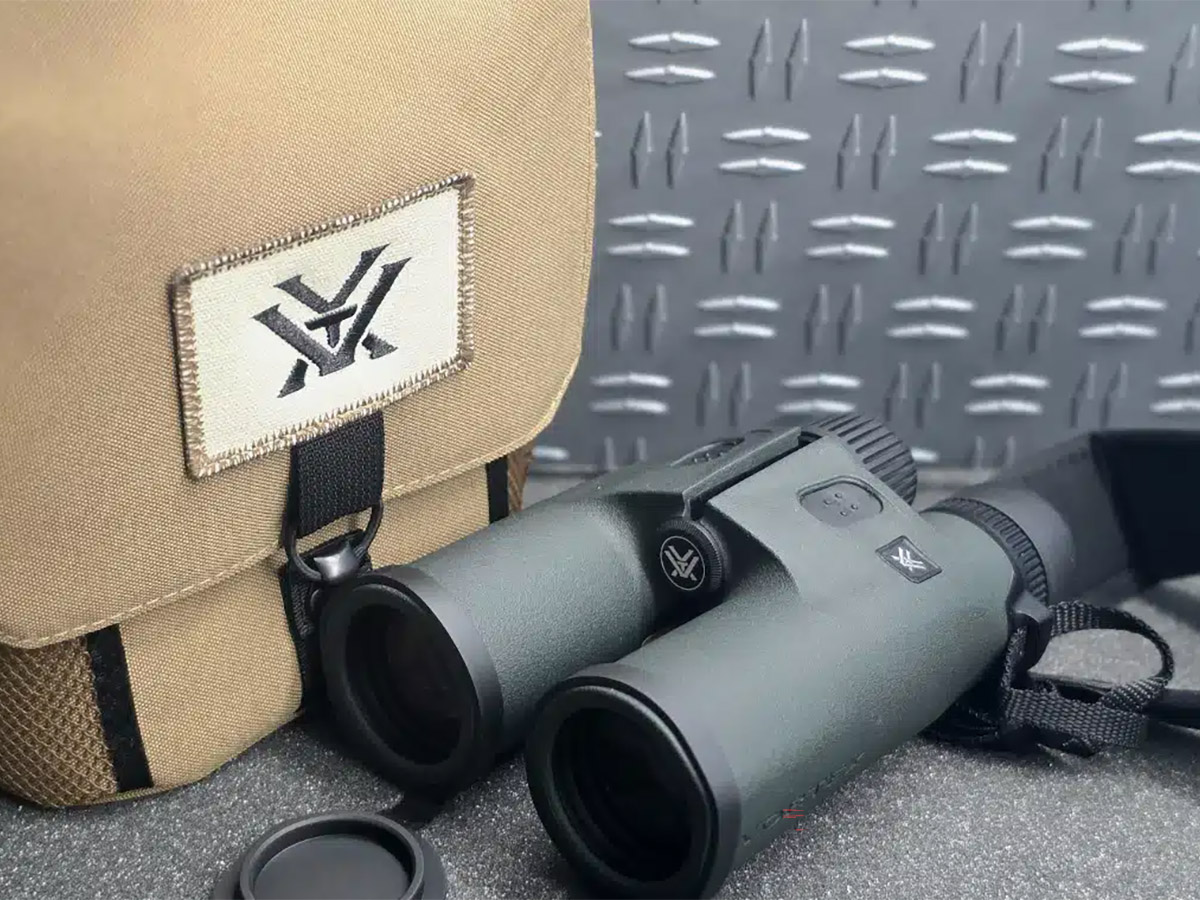I take Vortex’s new Ranger 3000 10×42 Laser Range Finding Binoculars out to see how they perform in the field.
Vortex has had LRF binos in the past, but those lines have been retired in favor of a total redesign. For a basic entry-level set of LRF binos, the Ranger 3000 is an impressive offering. The glass is clear, the reticle is easy to use, and the features cover what you need most without getting too into the weeds. Best of all, the price is reasonable.
VORTEX RANGER 3000 10×42 SPECS
FOV: 6.4 Degrees, 335-feet @ 1,000 yards
Close Focus: 6-feet
Eye Relief: 17mm
Interpupillary Distance: 56-75mm
Range: Max Reflective, 3,000 yards
Range: Tree, 1,800 yards
Range: Deer, 1,500 yards
Size: 6.7″ x 5.1″
Weight (w/ battery): 32.4 ounces
MSRP: $1,200 (Street closer to $800)

PROS:
- Fantastic glass for the price point
- Deep focal depth keeps near and far objects in focus
- Not heavy
- Vortex’s legendary customer support
CONS:
- Display feels dated
- Display brightness could use one more level
In The Field
Overall, the Ranger 3000 is an impressive set of LRF binos that delivers a lot for the money. For the average hunter or the beginner long range enthusiast, these are a solid offering to consider.
Glass quality is outstanding for the price. The right barrel has a very slight blue tint, but that is undoubtedly to enhance the display’s contrast and make it easier to read. While the tint is noticeable if you’re looking for it, it’s one of the lightest tints I’ve seen in an optic.

Chromatic aberration is almost non-existent, even at a distance and even on targets that normally exhibit it, such as brightly lit trees. Part of that is helped by the incredible depth of focus in the Ranger 3000. Focused at 55 yards, the image is crystal clear to past 500 yards. This makes glassing and searching a lot easier on the eyes and requires a lot less fussing with the focus knob.
Construction and durability seem on point for Vortex with a grippy, rubbery feel that doesn’t get slick when wet and solid protection around the eye pieces. Dropped once in the name of science (totally not because I tripped), the Ranger 3000 doesn’t even have a scuff mark.

It also comes with fairly standard accessories like a neck strap, cleaning cloth, and manual. One plus is the Vortex GlassPack Pro binocular harness. Included straps make it easy to set up as a chest rig or attach to another harness of your choice.
Critically important for LRF binos, and something not everyone gets right, is the alignment of the laser with the reticle in the binos. For my unit, the laser is slightly 6 o’clock from the dead center of the circle reticle and well within the circle itself. Getting precision ranges to past 600 yards was pretty easy with my arms supported. Locked into a tripod, the Ranger 3000 is entirely capable of get max range distance.
Just One Downside
While the display in the Ranger 3000 is OLED and easy to read, it uses segmented letters/numbers like a 1990’s alarm clock. For reading ranges, it’s not the worst, and it gets the job done. But navigating the menu and changing settings can be a little weird if you don’t know what you’re looking at. While there are context clues related to the exact setting you’re trying to change, the name of the setting in the menu might leave you a little confused.

Not entirely unreasonable, it would have been nice to see this updated in some way. Ultimately, not a huge deal since the settings are mostly something you’ll set once and leave. But if the time comes that you do need to change them, it might be wise to do so before you’re in the field and can’t remember what “nrñL t9t” means.
Loose Rounds
The Ranger 3000 isn’t the end-all, be-all of LRF binos. But they are a solid offering at a good price point, assuming you find them well below MSRP (and you will). While the Ranger 3000 lacks any kind of ballistic calculator or ability to interface with an app or a stand-alone unit like a Kestrel, it still does what you really need most — accurately tells you the range of something far away.
For beginner long range shooters or hunters of any strip, the Ranger 3000 is a great option.
More Binocular Options
Read the full article here



